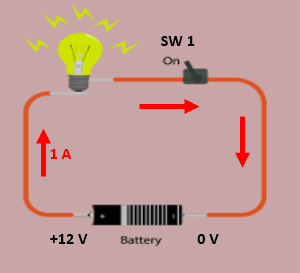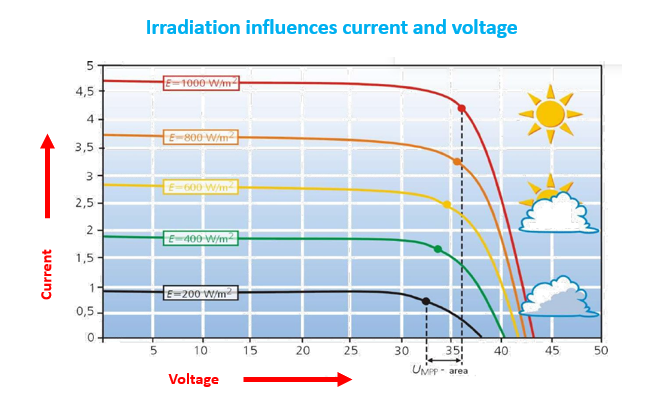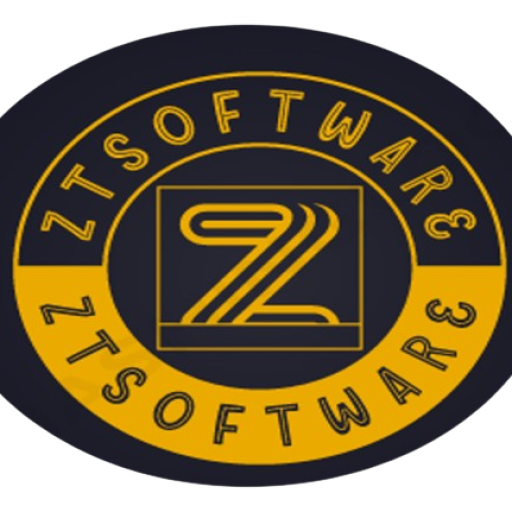The renewable energy industry has grown so much that it is advantageous to learn the basics to such technology. Because, as a consumer or as learner of new technology your knowledge will empower you to make better decision if you like to purchase such Solar PV System. In this article we will start-off with the three essential basic elements of electricity that is key in the Solar Technology. Then we see how they are applied in Solar PV Systems. Then lastly see how maximum power is achieved from irradiation.
Three electrical elements
There are many electrical elements which are important to know and do a Solar installation. However, we need to only know the following three elements which are current, voltage and power. Let’s, start with current which is presented by the “I” symbol. Then , the measuring unit for current is Amperes(A). In figure 1, the current value is 1 Amperes(A). Current by definition is the follow of electrons from high potential (voltage) to low potential. This potential is called voltage, in the below figure it is 12Volts(V) and the lower potential is 0V.
Figure 1: Electric circuit of light bulb and 12V supply

In simple terms, this voltage is what causes the current to follow as seen in the red arrow above figure. It can be further seen as a tap that opens water to flow. Then water is the current flowing the conductor which in the wires connecting the battery, the light bulb, the switch (SW1) and back to the battery.
Lastly, if these two elements which are Current and Voltage are multiplied together, we end up with Power. This Power’s symbol is “W” which when measured it is measured in Watts. In electrical term power is the transfer of electrical energy. As we all know power is work done in science, in electricity it’s the same it is just electrical energy used to do the work. Obviously , the formula to get power is:
P = V x I (Powert = Voltage x Current)
But why do we need to have understanding of these elements above? I am sure you may have seen Solar Panels are rated in power values example 550W. Furthermore, Solar Systems batteries are rated in voltage for example 24V, 48V etc.
Solar PV Technology
As we further apply voltage, current and power elements, it brings us to Solar PV Technology. Solar in essence, is the Sun rays’ power which forms part of the natural Solar system of the earth where we get light. Now, this light is referred to as “irradiance” or irradiation which comes from the sun. This irradiance, is the power we get from the sun to give power to our Solar PV System. You may ask what is the “PV”? How it is related to the Solar Technology? Now, PV is Photovoltaic. In other words, the Photo represents the light and Voltaic is voltage. Yes, you guessed it right the light is converted to voltage.
How then do you get power from the Solar PV system? Yes, we need current. This current flows in a Solar Panel which then is feed to the Solar PV System (which includes inverter and batteries). These elements work together the feed power to our electrical appliances in the house hold like TV’s, lights, stoves etc. However, to get more or less power to our house appliance we need an understanding of the behavior of current and voltage under different irradiance values.

Figure 2: The effect of irradiation on current and voltage
Why is it important to have an understating of how irradiation influences current and voltage? Its because a Solar PV System power is affected by the weather. As you can see in figure 2, that in cloudy days the irradiance is as low as 200 W/m2 . This means will Solar PV System on our roof top will give us less power on a cloudy day and better power on sunny days.
In conclusion, the three elements of electricity which are current, voltage and power help us understand electrical power. Then Solar PV Technology enables us to get an idea how such power is available to us to power our house appliances. Learn more about Solar PV installation in a practical approach by previewing the an online course on Udemy.
 ZTSolutions
ZTSolutions